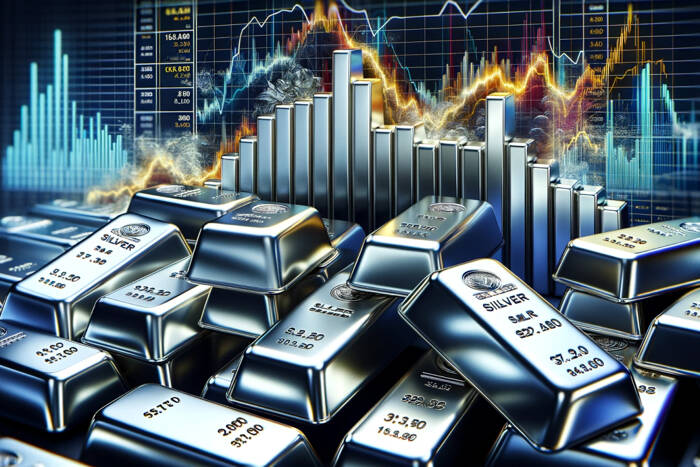As we look ahead to 2024, silver is poised for a remarkable comeback, projected to achieve a 22% gain, marking its best performance since 2020. This resurgence is not merely a product of market speculation; it is underpinned by a complex interplay of supply and demand dynamics, macroeconomic factors, and geopolitical tensions that are shaping the precious metals landscape.
Supply Crunch Tightens as Deficit Widens
The silver market is grappling with a significant supply-demand imbalance that has deepened in 2024. According to recent reports, silver production has only edged up by 2%, reaching 1.03 billion ounces. In stark contrast, demand has surged by 7%, totaling 1.21 billion ounces. This discrepancy has resulted in a market shortfall of 182 million ounces, marking the fourth consecutive year of undersupply.
A key driver of this growing deficit is the escalating industrial demand for silver, particularly in green technologies. The push towards renewable energy sources has placed silver at the forefront, with solar panels and electric vehicles leading the charge. Projections indicate that by 2050, solar manufacturing could consume the majority of global silver production, further straining an already tight market. Additionally, China’s ambitious $411 billion infrastructure stimulus plan for 2025 is expected to accelerate this trend, reinforcing silver’s critical role in the expansion of renewable energy technologies.
Fed, Dollar Strength Cap Silver’s Upside
Despite the bullish fundamentals surrounding silver, its potential for further gains is tempered by external economic factors, particularly Federal Reserve policy and the strength of the U.S. dollar. In late 2024, the Fed implemented three rate cuts, yet it has signaled a cautious approach moving forward, with only 50 basis points of easing anticipated in 2025. This gradual monetary policy supports the dollar and keeps Treasury yields elevated, which in turn diminishes the appeal of non-yielding assets like silver.
The 10-year Treasury yield has recently climbed to 4.641%, creating additional pressure on silver prices. Higher yields increase the opportunity cost for investors, making interest-bearing assets more attractive compared to precious metals. As a result, while the fundamentals may suggest a bullish outlook for silver, the prevailing economic environment poses significant challenges to its upside potential.
Geopolitical Tensions Keep Silver in Play
Amidst these macroeconomic forces, geopolitical tensions continue to play a crucial role in the silver market. Ongoing conflicts, such as those in Ukraine and the Middle East, have heightened demand for gold as a safe-haven asset. This increased interest in gold indirectly benefits silver, which is often viewed as a secondary safe-haven investment.
Moreover, central banks around the world have ramped up their gold purchases, contributing to the stabilization of precious metals markets. This central bank activity helps prevent sharper declines in silver prices, providing a safety net for investors amidst global uncertainty.
Conclusion
As we move further into 2024, silver’s trajectory appears promising, with a projected 22% gain that reflects its growing importance in the context of renewable energy and industrial demand. However, the interplay of Federal Reserve policies, dollar strength, and geopolitical tensions will continue to shape the market landscape. Investors should remain vigilant, balancing the bullish supply fundamentals against the broader economic and geopolitical backdrop that influences silver’s performance. In this complex environment, silver remains a compelling asset, poised to navigate the challenges and opportunities that lie ahead.




